How To Make A Hydraulic Press
What are Hydraulic Presses Used For?
Based on the nature of piece of work, a hydraulic printing may be modified to conform the need.
Hydraulic press used in industries are generally converted or built to crush or to press any "process" or the "product". For case, this may include steel plates, aluminum rolls, metal ores, etc. In this article, we volition discuss the general priciple of hydraulic presses followed by the details of the actual industrial hydraulic press.
What are the Components of a simple Hydraulic Press?
The system is a very simple example which demonstrates the functioning of a basic hydraulic system. It has two simple cylinders continued to each other, containing an adequate quantity of hydraulic fluid in it. I of the cylinders is larger in size when compared to the other. Both the cylinders have pistons in them, but in strict "hydraulic" terminology, the larger piston is called equally a "ram" and small i a "plunger". As seen from the figure, a small forcefulness "P" applied on the plunger, in the downward direction, presses the hydraulic fluid beneath it. This pressure level is transmitted equally in all directions and raises the "ram" (Pascal's Law). The heavier load placed on the "ram" is thus lifted upwards.
Wondering how a small forcefulness tin can lift up a heavy load?
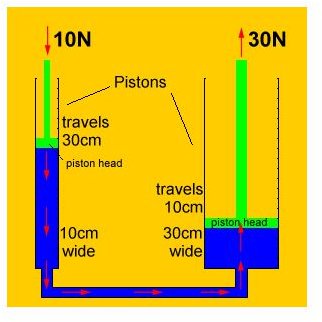
The forcefulness applied on the plunger may be modest when compared to the weight placed on the ram. Too, the expanse of the plunger is pocket-sized when compared to area of the ram. But the pressure level interim on the plunger (due to the application of forcefulness "F" on the plunger), and the ram is aforementioned (Pascal'south Law). It is the area on which the pressure is acting that makes the difference. The pressure level "P" acts on the ram, which has a large surface area. The same force per unit area "P" acting on the plunger has a small area. Likewise the distance traveled by the plunger is more than when compared to the distance traveled by the ram. This makes a small force applied on the plunger able to elevator heavy loads placed on the ram.
Mechanical Reward
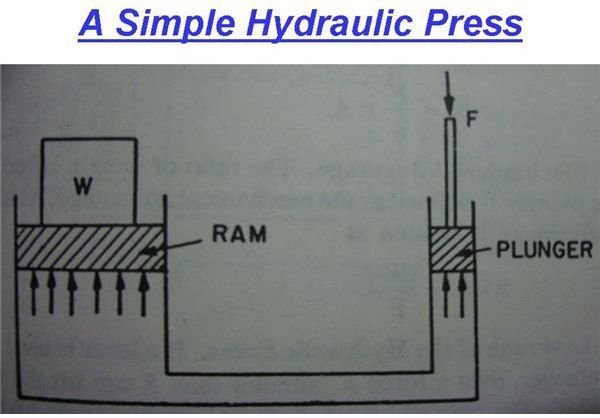
Let West = weight to be lifted,
F = strength practical on the plunger,
A = expanse of the ram,
"a" = area of the plunger,
P = pressure level intensity produced by force F.
We know that pressure P = Force / Expanse of plunger
P = F/a
Equally per the Pascal's Police force, this force per unit area P, due to the force acting on the plunger, is equally interim on all parts of the hydraulic system. So this same pressure acts on the ram besides. Then
P = F/a
Simply because only the ram,
Pressure P = W/A.
Then equating both the pressures, as they take to be equal,
West/A = F/a
So W = A/a * F.
Simply mechanical advantage can be divers every bit "the ratio of weight lifted to the force interim on the plunger."
So M.A = Westward/F.
Leverage for a Hydraulic Press
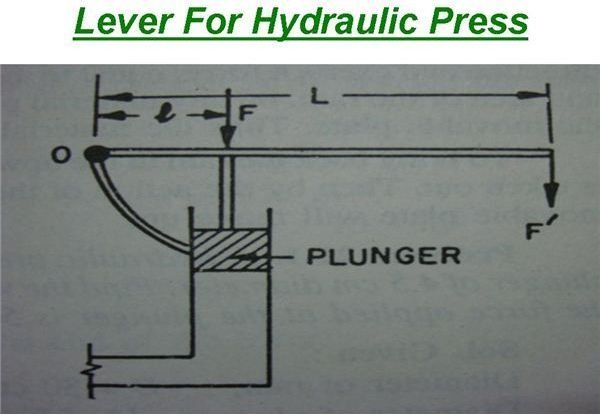
A lever is used to gain mechanical advantage when lifting heavy weights for which hydraulic systems already accept reduced the force which has to be applied by multiples. Past using a lever in combination with a hydraulic printing, the mechanical reward gained is further optimized.
Actual Heavy Hydraulic Press:
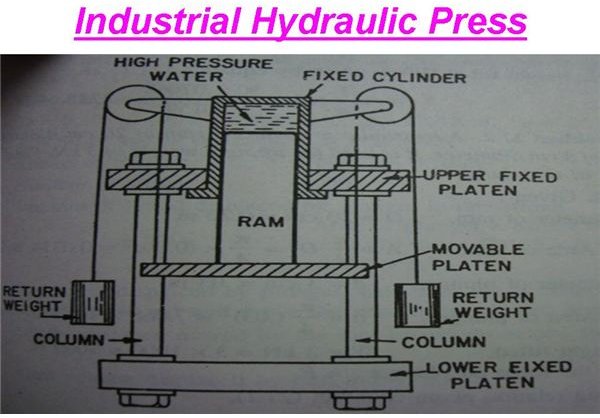
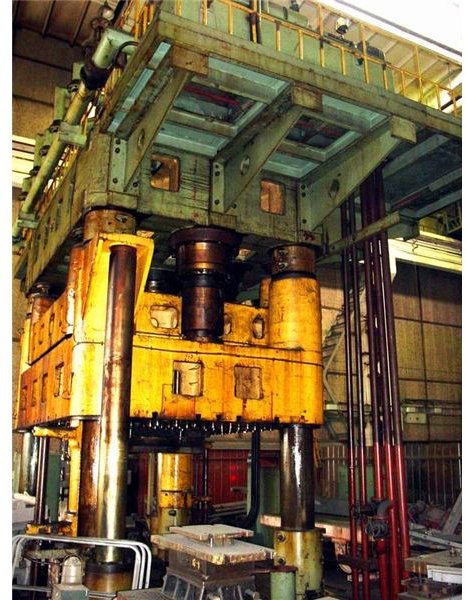
The moving-picture show at the left represents a typical industrial hydraulic press. Information technology has a fixed cylinder in which a ram is sliding. To the lower finish of the ram, a movable plate is attached. As the ram moves upwardly and down, the movable plate attached to the ram as well moves upwardly and down between two fixed plates. When a hydraulic fluid is supplied nether high force per unit area into the cylinder, the ram moves down exerting a force, which is equal to the product of the intensity of the pressure of hydraulic fluid and the surface area of the ram on which it acts. Thus any fabric placed betwixt the movable plate and the lower fixed plate gets pressed or even crushed depending on the pressure of the oil supplied. The render weights, which are suspended forth with the movable plate, ensure that the ram moves support after the pressure level inside the cylinder is released.
Thus we take seen the working of the hydraulic press and in my next article, we will discuss hydraulic accumulators.
References:
world wide web.tpub.com
www.alibaba.com
https://leo.koppel.ca/backhoe/hydraulics.html
A Text Book Of Hydraulics and fluid mechanics, by R.S. Khurmi.
Source: https://www.brighthubengineering.com/hydraulics-civil-engineering/43383-how-hydraulic-presses-are-used-in-industry/
Posted by: bethelhaecomming.blogspot.com


0 Response to "How To Make A Hydraulic Press"
Post a Comment